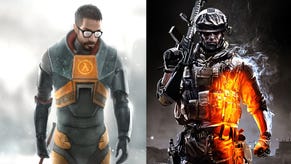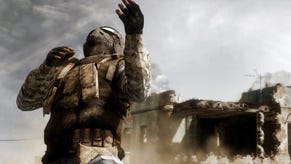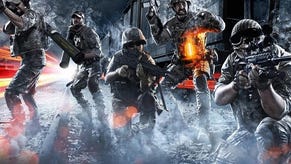Tech Analysis: Battlefield 3 PC
Tomorrow's technology today.
Advanced Anti-Aliasing Support
There are subtle drawbacks to using HDR post processing such as this, however, as it is factored in at a much later stage in the processing cycle. In particular, this has an impact on the effectiveness of conventional Multi-Sample Anti Aliasing (MSAA), which is oblivious to how the final image is effected after its application. This is where DICE's inclusion of Fast Approximate Anti Aliasing (FXAA) option in the graphics settings becomes relevant. As another form of post-processing that functions at a pixel level, it can soften the high contrast edges left on decorative elements such as fences or foliage.
Offered at three levels of intensity, including low, medium and high, FXAA softens the overall image ever so slightly, but has a keen eye for the jagged edges left on 2D elements especially - an area that sample-based AA techniques can't detect easily. It also does a good job of softening the straight edges without being too much of a drain on the GPU's resources. Given that 4x MSAA incurs a massive increase to the required fill-rate on a graphics card, this alternative solution does a very respectable job of cleaning up the image on a much lower processing budget.
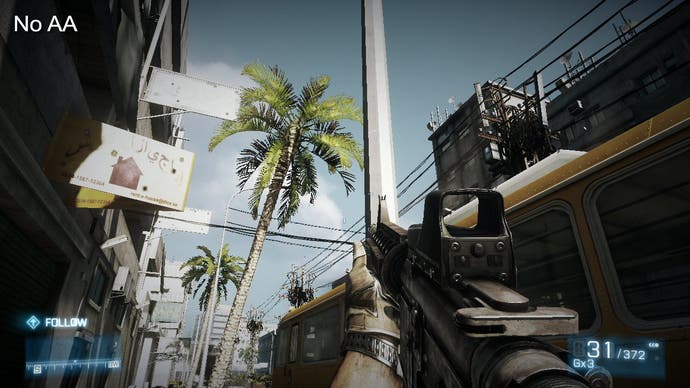
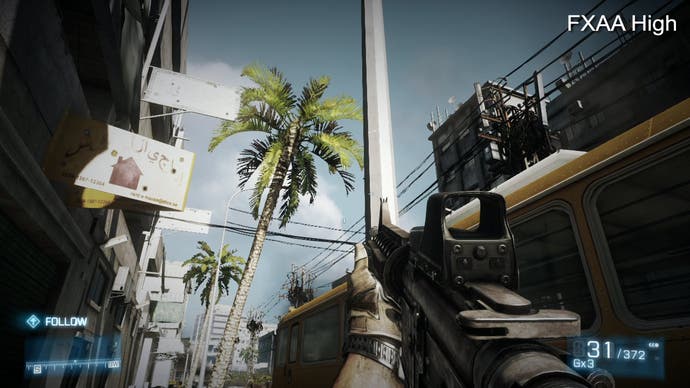
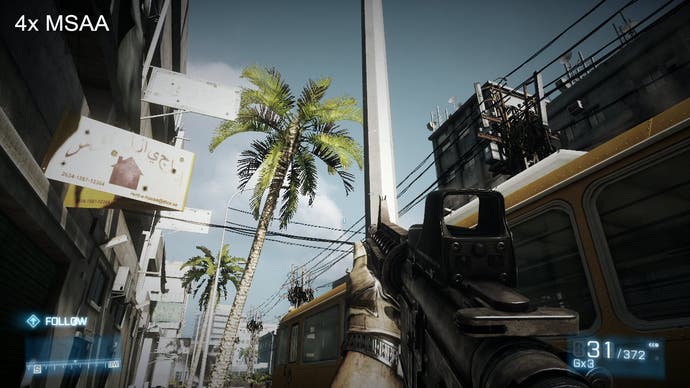
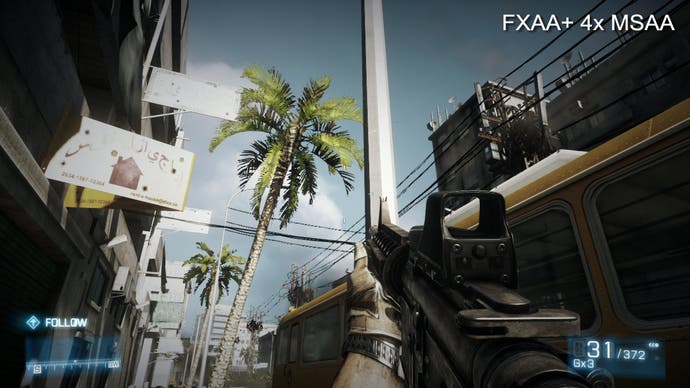
That being said, by offering both options to the player there's the possibility of reaping the benefits of each by having them run in tandem. While FXAA's pixel-level approach may pick up on jaggies left by leaves, power lines and crate grills, MSAA's ability to analyse edges at a geometry level means that it can catch out smaller, thinner details in objects that wouldn't be detected by the former method. So by having both running in conjunction at the highest settings, a more thorough dissection of each frame's high contrast edges is possible, making for a remarkably smooth image.
Physical Effects
Another major point of revision for Frostbite 2 is its proprietary physics and destruction engine. Above all else, the changes made here have the most tangible effect on how a multiplayer game plays out, with chunks of a concrete wall being procedurally chipped away to reveal sniper positions, or the flooring giving way entirely to a grenade blast. This places you in an environment that is in a constant state of geometric flux, making the level you finish playing on quite different to the one you started.
Much like in Bad Company 2, the precision of this chip effect is based on small pre-defined chunks in the geometry. Fortunately, instancing of objects also applies to these composite meshes - buildings with multiple destructible parts - which means that the reduced state of each object is stored separately for each instance, and that the performance benefits are maintained.
The campaign mode offers a far less ambitious approach though, featuring a mostly pared down implementation of the destruction engine which can sometimes make it difficult to distinguish between walls that can crumble to gunfire and walls that will remain eternally upright. Similarly, the physics engine effectiveness on small objects can be inconsistent by comparison to the multiplayer's all-encompassing approach, with grenades animating minor decorative parts like plates and the surrounding chairs, while tables and stacked crates remain inexplicably static.
It's a shame that this mode couldn't follow in the footsteps of Bad Company series' more free-form single-player structure, which involved the player in larger sandbox-style environments during certain battle sequences. As it is, the multiplayer mode demonstrates the Frostbite 2 engine's technical virtues far more admirably when it comes to physics.
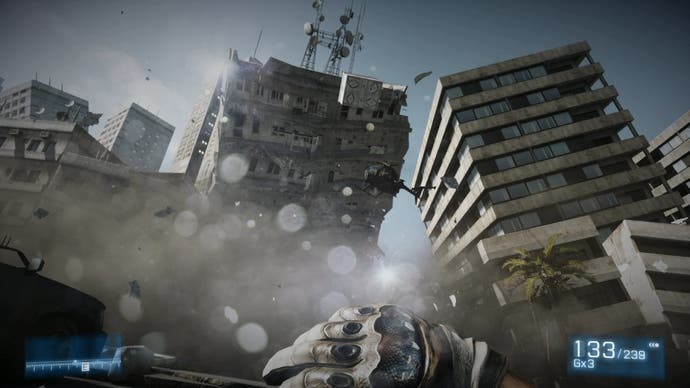
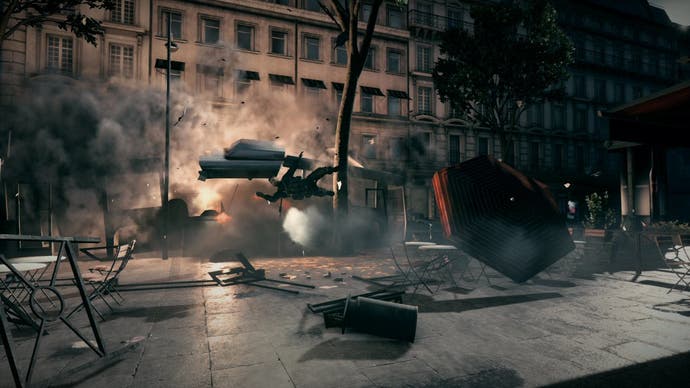
Beyond the Call of Duty?
Although the inclusion of a single-player component may come across as a rudimentary, tit-for-tat rebuttal to Call of Duty's full-featured offering, the fact of the matter is that DICE has used the campaign as an opportunity to showcase their new technology effectively. Save for the restrictive destruction physics, it directs the player's attention to some spectacular visual improvements, be it their new lighting engine which allows for an increased number of light sources, or the subtler performance optimisations resulting from Battlefield 3's native DX10 and DX11 support.
While some may argue that multiplayer maps such as Operation Metro still hint towards the influence of the console versions' 24 player count, the bulk of the experience is quintessentially closer to the sandbox map design of its progenitor: Battlefield 2. With that said, the plight of the PC developer shouldn't just be predicated on recreating the platform's halcyon days, but about discovering new ways to promote technology which to this day remains largely untapped. With Battlefield 3, it's satisfying to for once find a multi-platform game that still sets the PC version aside to show what could be possible in the next generation of hardware.

